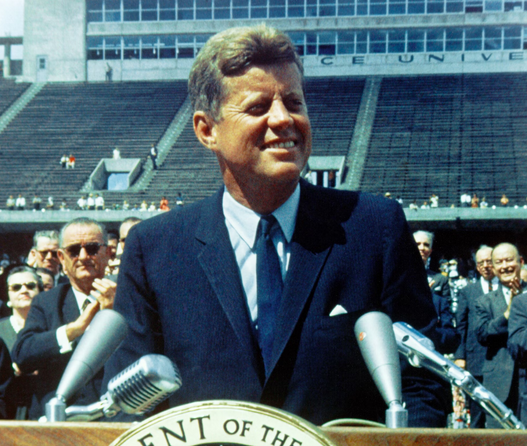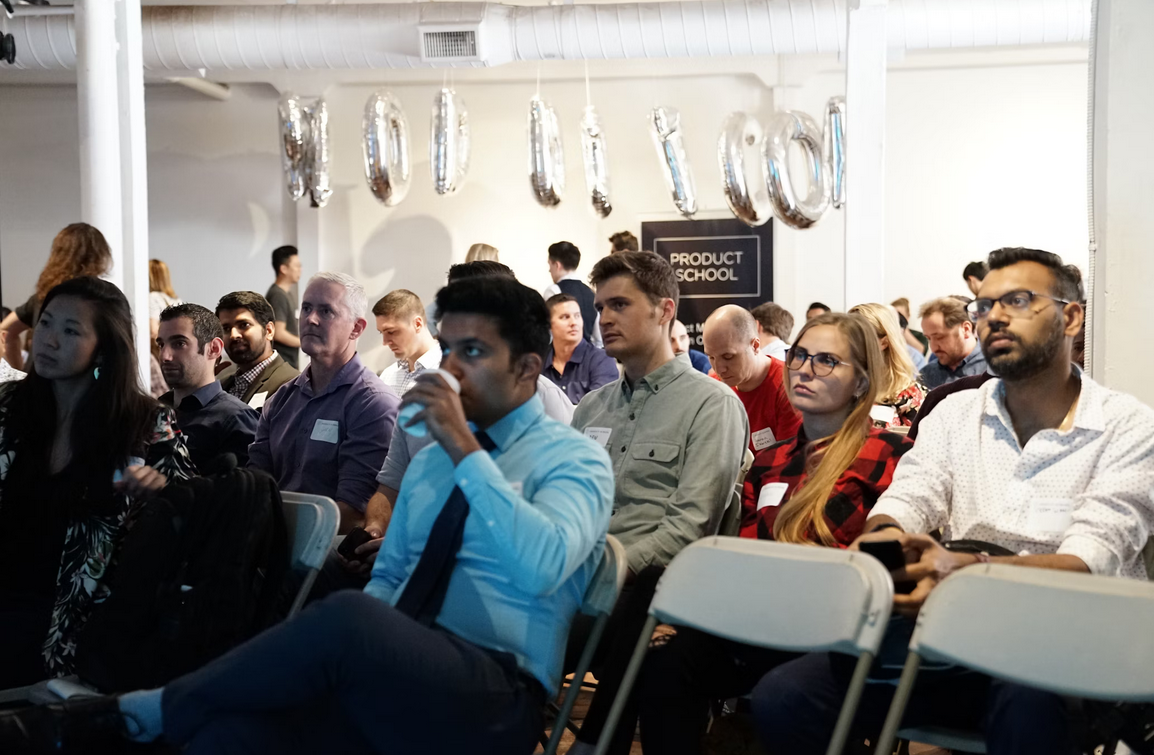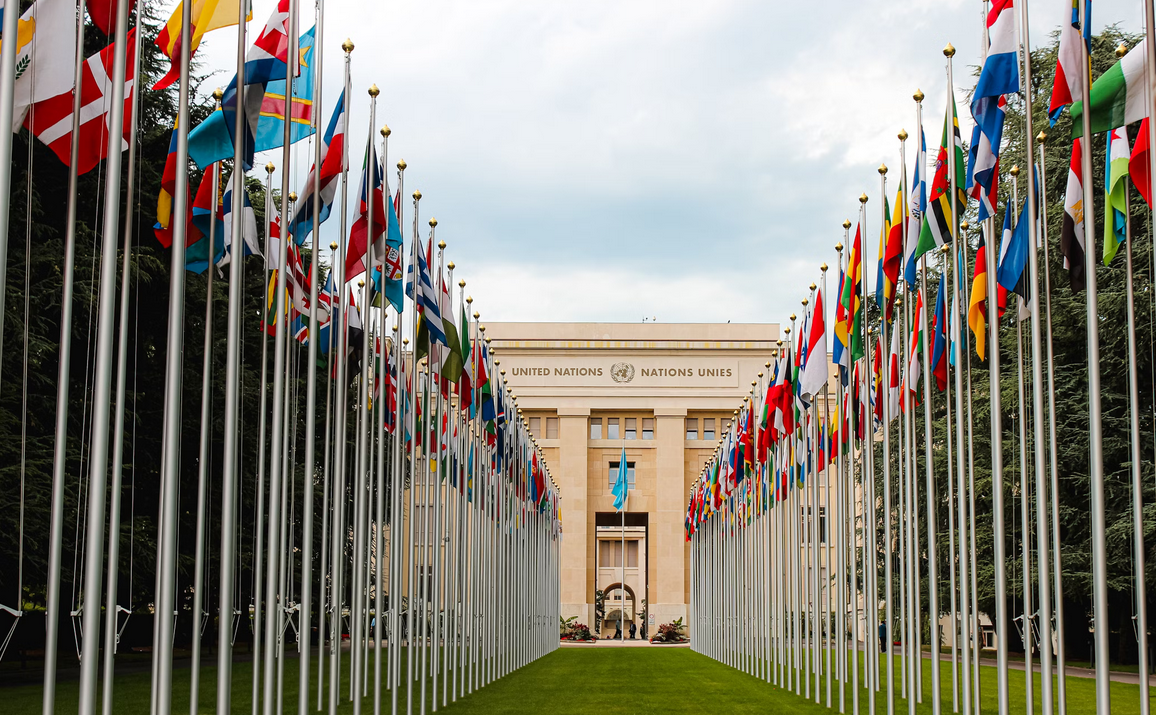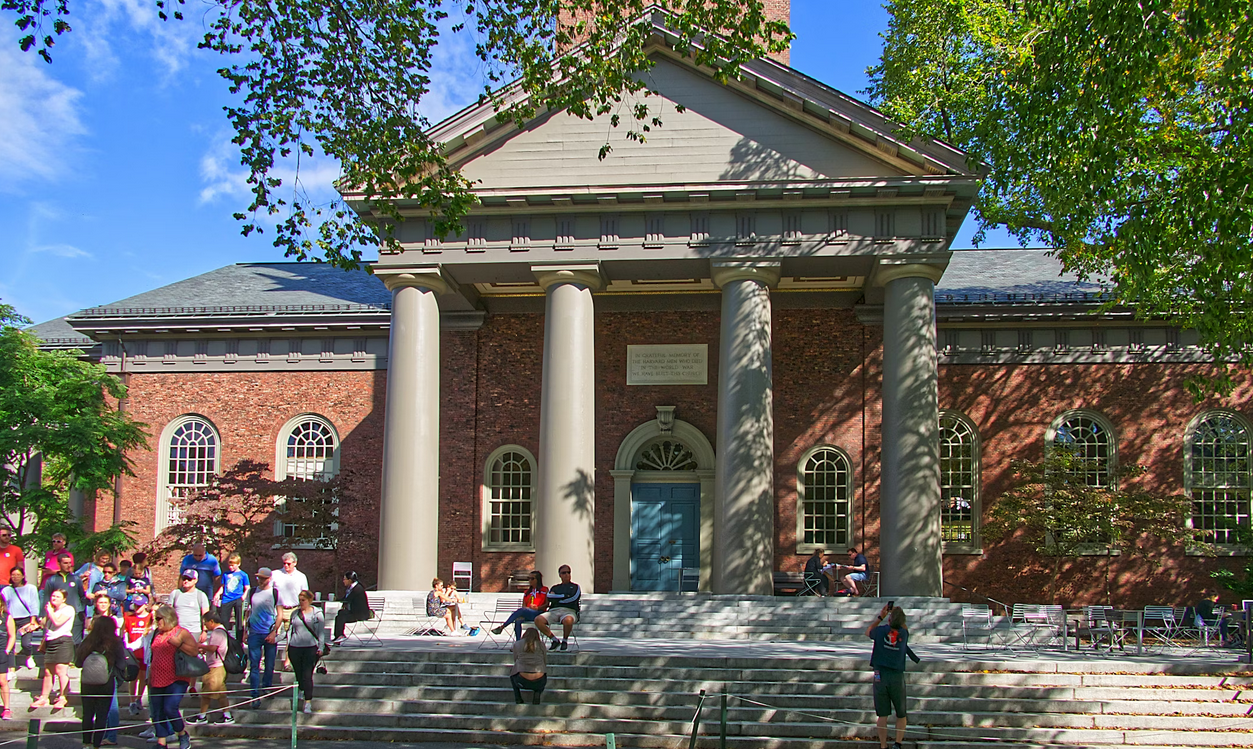
Experienced UIUC graduate student specializing in Math, Computer Science, and Writing
Availability:
Every day, 10:00am-10:00pm PST
Subjects:
Math
Computer Science
Writing
The Racist Legacy of Legacy Admissions
Last Updated:

- Applications to the Ivy League schools plus M.I.T, Duke University, University of Chicago, and Stanford have tripled since 2002 to almost 600,000 total
- As some universities drop standardized testing and students go to elite prep programs to get high scores, students will have to stand out based on essays and extracurricular activities
- Even though fewer jobs require four-year degrees and state schools are great, top schools still draw the most attention from researchers and innovative companies
In a backlash to the Supreme Court decision to ban affirmative action, the movement to ban legacy admissions scored a major victory with a ban for all universities in California.
Almost 75% of research universities have some degree of legacy preferences in their admission process. One analysis in 2005 concluded that legacy admissions increases admissions chances by nearly 20% in 20 top universities.
Legacy admissions has often been called “affirmative action for the affluent.”
When affirmative action was struck down, many felt that it was only fair for legacy admissions to go as well due to the way legacy is tied with privileged statuses, especially race and wealth. Former Harvard University President Lawnrece Summers once wrote that “they are integral to the kind of community that any private educational institution is.” There was little effort to hide legacy admissions as a tool to solidify an elite class, a relic of being a tool for racial discrimination.
Now that the Supreme Court has ruled that race cannot play a role in admissions processes, anti-legacy admissions activists are framing legacy preferences as a form of race-based discrimination that prioritizes white applicants who benefitted from the systemic discrimination of older university policies. Under US law, policies can be considered a violation of equal protection rights if they have a racially disparate impact, even if it’s unintentional.
What are the origins of legacy admissions?
Like most institutions in the United States, higher education has been heavily shaped by the culture of Protestant elites in the early 20th century. As waves of immigrants from Europe, featuring Irish Catholics, Italians, and Jewish people, came to America, these Protestant elites were increasingly concerned about keeping control of educational and employment opportunities for themselves.
They created a network of private preparatory schools to give their children an advantage in college admissions, and public schools were designed primarily to teach Anglo-Protestant norms and values to new arrivals. This extended to private colleges as well, with Boston University and Northwestern University being among the Protestant-backed institutions created to expand this network.
By the 1920s, these colleges — including Harvard University, Princeton University, and Yale University — were closely associated with being upper-class institutions that largely took in the sons of alumni, private prep school students, and children from Protestant ministers and school heads on scholarships. Still, Jewish students persisted and were entering college in greater numbers over time, which greatly concerned school administrators. Aside from their own anti-Semitism and anti-Catholic sentiments, they worried that Protestant students would go elsewhere if too many non-Protestant students were accepted.
This led administrators to expand the admissions criteria to look beyond academics. They started including vague, ambiguous criteria under the “holistic” admissions framework:
“Good character,” which was a euphemism for being from an approved ethnicity without Jewish affiliations
“Adequate preparation,” which meant coming from an approved private school like the Protestant network setup
“Lineage,” which referred to the educational history of the student’s family and served most closely to the legacy admissions we know today
They also asked for demographic data that they could use for discrimination, like asking about religion and birthplaces or asking for a photo. Even the letter of recommendation system they used was intended to limit outsiders by requiring recommenders to be students or alumni.
The discrimination wasn’t restricted to the admissions process either, as universities condoned student organizations that excluded Jewish members and added hostility to the campus environment to discourage applicants.
They began offering scholarships only to students who lived outside the New York area and mandated that students live in campus dormitories to exclude Jewish students who commuted from home.
In fact, the history of standardized testing is closely tied to testing knowledge Jewish students didn’t have access to in public schools (such as translating Latin) so that only elite students in prep schools would do well.
With these tactics, Columbia University was able to cut the Jewish student population from 40% to 20% in just two years. Harvard and Yale adopted quota systems to strictly control the number of Jewish students. In fact, Yale used a legacy admissions policy in 1925 that explicitly prioritized “Yale sons of good character and reasonably good record… regardless of the number of applicants and the superiority of outside competitors.”
There are those words again — “good character.”
Are legacy admissions still reinforcing inequality?
Evidence suggests yes.
One study of Harvard’s admissions data revealed that more than 43% of white admits were ALDCs: athletes, legacies, those on a special “dean’s interest” list, and children of university staff. The authors predict that 75% of white ALDCs would have been rejected if they didn’t fit into one of these special categories.
In 1992, a survey found that all 75 of the top universities in the US News and World Report rankings were using legacy preferences.
In 2020, another survey found that 51 of the 64 most competitive colleges still provide some level of advantages to children of alumni, despite a growing movement against legacy preferences.
Here are some additional figures to consider:
In 1995, 96% of Ivy League alumni were white
In 2019, 70% of Harvard’s legacy applicants were white
From 2014-2019, Harvard accepted legacy students at a rate of 33%
In 2022, Harvard admitted 34% of legacy applicants and 42% of donor-related applicants compared to its overall admit rate of 3.2%
Legacy applicants receive an advantage worth about 160 points on the SAT
Ivy League schools admit legacy students at 2 to 5 times the general student admission rate
76% of economics agree that legacy preferences cost universities students with greater academic potential than the legacy admits
On Harvard’s admission statistics page for the Class of 2028, there is no explicit number for how many white students are attending the university. We can infer it’s about 32% from the remaining ethnicities stated, but it certainly makes comparing admissions rates more inconvenient.
It’s worth noting that this doesn’t mean being white is an automatic benefit, but rather that elites benefit from the legacy process and those elites are predominantly white due to a history of Protestant-dominated institutions in the 21st century. When those elites raise barriers to preserve opportunity for themselves, we see these kinds of statistics emerge where benefits and insider knowledge are kept within a racial, ethnic, or religious community network.
This also doesn’t mean that universities are always consciously discriminating against a race or ethnicity with systemic guidelines, but rather that they cause discriminatory impacts because of their priorities on raising funds by keeping elite alumni happy.
There are some who argue that legacy admissions can actually be a tool for diversity.
As mentioned before, being white doesn’t mean you’re treated like an elite, and vice versa — being elite doesn’t mean you’re white. Many highly successful black students have gone through Harvard and become significant alumni, with one of the most well-known being President Barack Obama. Some argue that accomplished black scientists, business leaders, and politicians can use legacy admissions to help their kids establish a tradition of going to top schools.
But even if this was a viable way to bridge racial inequality or promote racial diversity, it still reinforces economic inequalities as white students from working class families will be disadvantaged compared to black students from elite families.
What does a preference for legacy admissions look like at universities?
Special Access to Admissions Process Details
Many people aren’t aware that universities offer special resources to applicants who are related to alumni. This includes:
coaching with insider strategies on successful applications
alumni councils that give special advising sessions
connections to legacy students who were accepted
dedicated counselors to provide personal mentorship
Scholarships and tuition discounts (e.g. charging out-of-state residents in-state tuition)
Guidance for transferring in later to rejected legacy students
Maintaining a “Z-list” which offers guaranteed admittance if students take a gap year first
On a personal note, I once met a student whose parents were both alumni and admissions officers for a top college, and I learned that they commonly share their unique perspectives and experiences with other alumni. This knowledge can spread quickly among tight-knit communities, giving the kids of alumni — and the peers in their social circles — a significant advantage over others.
Direct Intervention from Administrators
At certain universities, students that qualify for legacy admissions receive personal reviews from Deans of the school. Even colleges with a reputation for academic rigor and technical skills like Massachusetts Institute of Technology (MIT) have used this practice into the 2000s, giving school administrators the opportunity to play a direct role in which students are accepted.
Some officials and alumni from MIT claim that they haven’t applied legacy preferential treatment in decades. Director of Communications Chris Peterson claims “we have not offered a legacy preference in at least the last half century, and likely longer.”
But this contradicts former Dean of Admissions Marilee Jones: “There is a bit of professional courtesy involved in the cases of the [children or grandchildren] of MIT alumni. If the Admissions Committee turns one of these students down because the student is not one of the top candidates, I will personally review the case to ensure that the decision is a sound one.” She later resigned when it was discovered she lied about her own academic credentials.
In the Common Data Set (CDS) that schools voluntarily submit information to, MIT initially claimed in several of the years from 2000-2012 that alumni connections were considered. In 2012, MIT suddenly seemed to issue a correction for all of those years that claimed alumni connections were not considered. MIT does not provide complete CDS data on its own website for the years before 2021.
MIT has since taken down the interview with Jones discussing legacy preferences, instead pointing to a blog post defending the claim that legacy does not exist at MIT. Coincidentally, the blog post was written in 2012 — the same year that corrections were issued to data submitted in the past claiming MIT didn’t consider legacy admissions.
Whether or not that’s true currently, there is certainly evidence that legacy applicants received special treatment during the process that non-legacy applicants did not.
Even in Peterson’s blog post, when confronted with Jones’ interview, he admits that he doesn’t know how many legacy applicants are being reviewed personally by the current Dean of Admissions Stu Schmill: “I imagine that there are still cases Stu takes a second look at; that's part of the territory with becoming a Dean.” Despite his claims that there are no legacy preferences at MIT, he admits that interference in the admissions process from the Dean is simply part of the job.
This is a process that’s ripe for all kinds of corruption from elite alumni with millions to donate to ensure their children are accepted, under the university’s guise of wanting students from families with a track record of academic success. While it’s impossible to say exactly what happened at MIT, the motivation for MIT to preserve its brand as a supposedly meritocratic school and fund cutting-edge projects other universities can’t are obvious factors that could tempt a university into hiding details about their admissions process.
Over 75% of Americans believe that legacy should have no role in the admissions process to eliminate the potential for corruption, dishonesty, ambiguity, and greed from college campuses.
How has legacy admissions been challenged in the past?
There haven’t been many significant court cases to challenge legacy admissions, despite the claims that legacy admissions are a form of race-based discrimination.
In 1975, an applicant to the freshmen class of University of North Carolina at Chapel Hill argued that the college had violated her right to equal protection and due process by allegedly giving preferential treatment to children of alumni, athletes, international students, and low socioeconomic status. The Court did not find that legacy admissions were discriminatory, and it was revealed that the applicant had not even completed the set of required high school courses to be eligible for admission.
Some notable colleges took their own initiatives to move past legacy admissions, with over 100 colleges that stopped providing legacy preferences since 2015. These include:
Johns Hopkins University
Pomona College
Amherst College
Wesleyan University
Only four states have outright banned legacy admissions. Colorado was the first state to ban legacy admissions for public colleges in 2021, followed by Maryland, Virginia, and California.
How has California reacted to legacy admissions?
The University of California and California State University systems have been prohibited from considering legacy admissions since the 1990s as public universities, but it wasn’t until 2024 that California banned legacy admissions in private universities as well, such as the University of Southern California and Stanford University.
How are Asian-American students impacted by legacy admissions?
Incidentally, when the Supreme Court struck down affirmative action in 2024, it was over a claim made by the Students for Fair Admissions that Asians were being discriminated against by Harvard University through significantly lowered “personal” scores that were left to subjective factors. Many argue that the same “holistic” approach that allowed school officials to reject Jewish students was being used to limit the number of Asian students. 64 Asian-American organizations filed a complaint against Harvard with the Department of Education in 2015 backing the case, prompting an investigation.
Asian-American students in the United States are often the children of highly skilled immigrants, whose economic successes help them become some of the most talented academic performers. However, being recent arrivals, many of these families have no history of college in the United States even if they went to prestigious colleges in their original countries. The Bay Area — including the Tri-Valley region — has lots of these communities.
Some accused Harvard of trying to “balance” its racial demographics by deliberately lowering “personal” scores of Asian students, with one Harvard admissions officer even saying that Asian students have been rejected just because “so many” of them “looked just like” each other.
In 2009, a study found that Asians had to score 140 points more than white students to have the same chance of admissions. The boost provided by legacy admissions is estimated to be about 160 points, which is remarkably close.
Many believe that giving Asian students a disadvantage on “personal” scores is a way to keep them from benefiting from the legacy admissions process while prioritizing existing elite legacy applicants, who are predominantly white.
East Asians have a 17% lower chance of attending than white applicants with similar applications, and South Asians have a whopping 49% lower chance than white applicants as the group least likely to have a parent that attended an Ivy League school. At the same time, white students are six times more likely than South Asian students to have legacy status.
Some people have offered alternative theories for this discrepancy, such as geographic diversity. Many Asian communities are concentrated at the coasts, and universities claim they have an interest in including diverse geographic viewpoints. However, the original framework for accepting students from across the nation was rooted in attempts from the early 1900s to exclude Jewish students (concentrated in New York) from consideration. Many argue that Asians are suffering from a similar systemic disadvantage now.
Others also mention that these universities often treat “Asian” as one single demographic, despite the fact that Asia is a continent of almost 5 billion people and 48 countries. The Asian-American communities in the US have incredibly diverse roots, with many members being recent arrivals tied closely to the cultures of their original countries that have been developing for thousands of years. To use “Asian” as a category is a bigger blow to a cultural and ideological diversity than that between different US states.
How are underrepresented students impacted by legacy admissions?
Legacy admissions act on multiple dimensions, including race and economic class.
High-achieving white students have been found to be twice as likely as high-achieving black students to have legacy status, meaning that preferences for legacy students disadvantages black students.
Among universities that consider legacy status, both Hispanic and black student enrollment is lower than universities that don’t. The same applies to student enrollment among Pell Grant recipients, indicating that students from families with lower income also have a disadvantage.
For example, the University of Notre Dame is known for strong legacy preferences with up to 25% of each class being children of alumni, and it also has a black student population of just 3.59% and a Hispanic student population of about 13%.
There seems to be near unanimous consensus among researchers that legacy admissions offers a disproportionate benefit to white and upper-class families, but some have argued that legacy admissions presents an opportunity for marginalized groups. There have been several notable opinion pieces written by black alumni from the Ivy-Plus schools who claim that legacy preferences will help their children and their children’s children gain acceptance at prestigious schools. Many feel that it’s unfair to take away legacy admissions just as they finally have the advantage that white alumni enjoyed for over a century.
However, it’s difficult to see how opportunities can systematically increase for underrepresented groups if only a select group of families will benefit from joining an elite class.
Related Articles

The Rise and Fall of Affirmative Action

The Competition for College Seats is Not Sustainable

International Students are Enrolling in the US at Fastest Rate in Decades

How Oil Companies Built a Pipeline into Universities

International Conflicts are Slowing Down Research Projects
